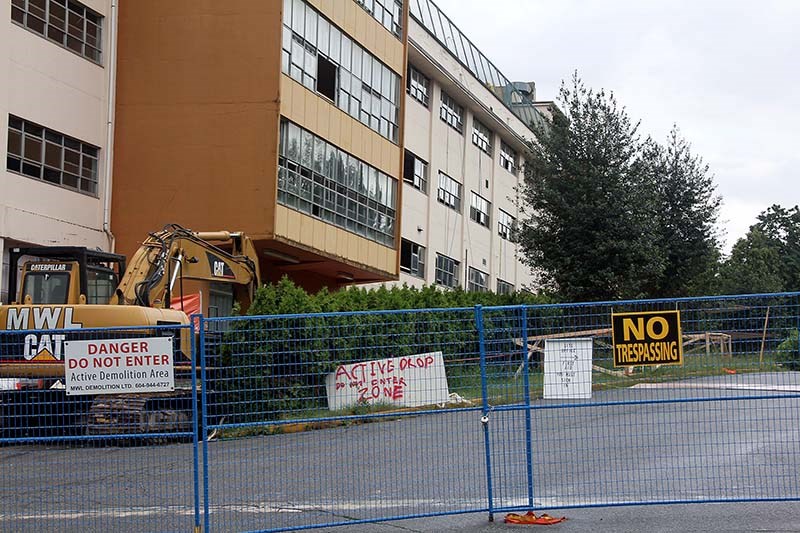I must admit to being disheartened by the demolition that is currently happening on the Riverview Hospital grounds in accordance with the plans announced by BC Housing last December.
The building currently being ripped apart is Valleyview, a hospital building that opened in 1959. It had been used for many years for the assessment of patients suffering from dementia. When it closed in 2012, it was one of the last buildings of the original Riverview Hospital to be emptied of its patients.
The Burke Mountain Naturalists and Riverview Horticultural Centre Society had always hoped that Valleyview would be re-opened. After all, there is an urgent need for more beds to meet the growing needs of an elderly population suffering from problems such as dementia. Valleyview was designed to have many features suitable for such use, including enclosed gardens where patients could walk without getting lost.
The inside of the building is as contemporary as many hospitals still in use throughout Metro Vancouver. Specially designed for geriatric patients, it was one of the first hospitals to be built with wide hallways and railings to assist the mobility of patients confined to wheelchairs. It also had facilities for occupational therapy. When I visited Valleyview in 2011, the tantalizing aroma of freshly baked cookies wafted from one of these rooms.
While Valleyview was built to accommodate 328 patients, contemporary standards would probably allocate this space for approximately 200 beds. Last December, when Minister Rich Colman was asked why Valleyview was slated for demolition, he shrugged his shoulders and said it was the asbestos in the building.
Of course, many buildings dating from the 1950s have asbestos in them. Often, it is in the form of floor tiles or, sometimes, insulation or drywall. But the mere presence of asbestos in a building is not a reason to destroy it. If, for example, your older home contains asbestos tiles, there are methods for safe removal or ways to simply seal the offending material in place. The presence of asbestos does not mean your entire home must be torn down.
BC Housing has never disclosed the rationale for destroying Valleyview.
In 2013, BC Housing conducted assessments on 43 buildings at Riverview and made these assessments part of the documents posted for public review on the website renewingriverview.com. Oddly, Valleyview was not one of the buildings apparently assessed — or, at least, its assessment was not included in the documents made available. It seems bizarre a decision would be made to demolish a building without such an assessment. In fact, it would be irresponsible for government to take such action without an assessment.
To my mind, the apparently missing assessment of Valleyview is puzzling — it suggests the government is withholding information.
Once Valleyview has been obliterated, a new facility with 105 beds will rise in its place. This will replace the Burnaby Centre for Mental Health and Addiction with the addition of 17 new beds and is expected to open in 2019. In addition to this facility, construction will also start next year to replace the 28-bed Maples Adolescent Treatment Centre, also in Burnaby, and a 10-bed Provincial Assessment Centre. For a total expenditure of $175 million, taxpayers will gain only 17 new beds for mental health care.
A major failure of BC Housing’s plan for the future of the Riverview grounds is that only a small portion of the site is to remain dedicated for mental health care. Its plans call for most of the site to be used for market and some supportive housing, retail stores and a large zone of “economic development.” This division of Riverview into such a jumble of uses suggests the real reason behind the destruction of Valleyview is that insufficient space has been allocated for mental health care, which leaves only the option to tear down old buildings to make room for new ones.
People in our community have spoken loudly and longingly of the need for the entire site at Riverview to remain dedicated for mental health care. The city of Coquitlam supported such a vision in its 2014 Higenbottam Report, which calls for Riverview to be developed as a campus of health care.
Why does the provincial government remain so obstinately out of step with views expressed in this community and what is the real reason behind the destruction of Valleyview?
--Elaine Golds is a Port Moody environmentalist who is president and conservation chair of the Burke Mountain Naturalists, and member of the boards of the Colony Farm Park Association and the Port Moody Ecological Society.



